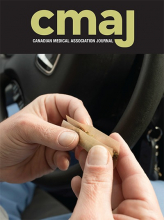Antihistamines are among the most commonly and incorrectly used medicines worldwide
Antihistamine use is most strongly supported for treating allergic rhinoconjunctivitis (“hay fever”) and urticaria (hives).1–3 Avoid off-label usage for conditions where antihistamines have questionable utility, such as in managing asthma, eczema, cough or insomnia.
First-generation antihistamines are associated with substantial and sometimes fatal adverse effects
First-generation antihistamines (e.g., diphenhydramine [Benadryl], chlorpheniramine [Chlor-Tripolon], hydroxyzine [Atarax]) cause sedation, injury and impairment in sleep, and psychomotor and cognitive function, including impairing performance at school.1–3 Overdose can result in death from anticholinergic and anti-α-adrenergic effects, and QT prolongation (including torsades de pointes). First-generation antihistamines are on the Beers list of potentially inappropriate medications for older persons.3
Newer antihistamines are safer, as affordable and as efficacious as first-generation antihistamines
Compared with first-generation antihistamines, systematic reviews of randomized controlled trials have found newer antihistamines to be safer (e.g., 4% sedation v. 28%),2–4 longer lasting (12–24 h v. 4–6 h dosing) and faster acting (50 v. 80 min).1 The World Health Organization replaced chlorpheniramine with loratadine on its essential medicines list in 2013 for these reasons (see Table 1 and Appendix 1, available at www.cmaj.ca/lookup/doi/10.1503/cmaj.201959/tab-related-content for preferred antihistamines).3 Bilastine and fexofenadine are the least sedating options. However, no antihistamine should be consumed with alcohol.
Summary of preferred antihistamines for allergy and urticaria
Antihistamines should not be used instead of epinephrine to treat anaphylaxis
Oral antihistamines can be used in addition to, but should not replace, epinephrine for the treatment of anaphylaxis.1,3 Intravenous diphenhydramine can cause vasodilation and sedation, which can worsen hypotension and confound assessment of patients with anaphylaxis.1,3
Most antihistamines are safe during pregnancy and breastfeeding
Systematic reviews of observational studies show no association with adverse fetal or maternal outcomes with antihistamine use during pregnancy or breastfeeding, and they are also safe for children.2,3,5 There is inadequate evidence regarding the newest antihistamines (rupatadine, bilastine) to support their use in pregnancy.
CMAJ invites submissions to “Five things to know about …” Submit manuscripts online at http://mc.manuscriptcentral.com/cmaj
Footnotes
Competing interests: Derek Chu is a CAAIF-CSACI-AllerGen Emerging Clinician-Scientist Research Fellow, supported by the Canadian Allergy, Asthma and Immunology Foundation, the Canadian Society of Allergy and Clinical Immunology and AllerGen NCE Inc. (the Allergy, Genes and Environment Network). Gordon Sussman reports grants and personal fees from Novartis, Aralez, CSL Behring, Sanofi, Pediapharm, GSK, Genentech, DBV technologies, Aimmune, AstraZeneca, Stallergenes, Merck, Pfizer, Dyax, Biocryst, Greencross, Kendrion, Shire, Leopharma, Regeneron and mdBriefCase and grants from Novartis, GSK, Genentech, DBV technologies, Aimmune, CSL Behring, AstraZeneca, Stallergenes, Merck, Pfizer, Dyax, Biocryst, Greencross, Kendrion, Leo Pharma, Regeneron, Sanofi, Blueprint, ALK, Amgen and Cliantha outside the submitted work. No other competing interests were declared.
This article has been peer reviewed.
This is an Open Access article distributed in accordance with the terms of the Creative Commons Attribution (CC BY-NC-ND 4.0) licence, which permits use, distribution and reproduction in any medium, provided that the original publication is properly cited, the use is noncommercial (i.e., research or educational use), and no modifications or adaptations are made. See: https://creativecommons.org/licenses/by-nc-nd/4.0/











